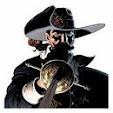The events leading to the 1868 revolution were told in Crisis and Revolution. The Glorious. What happened next was summarized in Crisis and Revolution. The Democratic Sexenio (1868-1874).
In this article we are going to focus on the cantonal insurrection, which started in June 1873, and particularly on the events of Cartagena.
In May 1873, elections were held to the Constituent Cortes. They were boycotted by almost all parties, including Unitarian Republicans, and the turnout was the lowest ever recorded in Spain. Just 25% of voters voted in Barcelona and 28% in Madrid. Although delegitimized by the small number of voters, Federalist Republicans achieved an overwhelming majority of seats.
The first of the many tasks ahead of the new Cortes was to draft and approve a new constitution. President Estanislao Figueras, sick of the difficulties and chaos, resigned. The Federalist Francisco Pi i Margal was elected to replace him.
Federalists Republicans blamed centralism as the source of all the ills of the country and claimed that Spanish regions were constituted into sovereign states. The Federalists had more presence in the periphery of Spain, especially in the south and southeast.
 |
| Territorial organization proposed in the 1873 Constitution project. It was never enacted. Source: Wikipedia |
The most impatient followers of Pi i Margall demanded the immediate establishment of a federal republic. In many parts of Spain there were insurgencies that overflowed the president, who refused to fight them with weapons. A month and a week after his election, he was forced to resign and was replaced by Nicolás Salmerón, a moderate federalist.
In Cartagena, the federalist movement, led by Roque Barcia and the general Contreras, and later on also by the popular Antonete Gálvez, managed to gain control of the city and, which was decisive, also of the fleet moored at the port that joined the uprising. On July 12, 1873 it was proclaimed the independent canton, calling themselves as Murcian canton. Those who opposed the insurrection could freely leave Cartagena.
In many cases, the independent cantons began to face each other. Some villages declared themselves independent of their provincial capital and there were cantons trying to solve border problems with other cantons using weapons.
In this situation, the government sent to general Martínez Campos (monarchist) and general Pavía (unitarian republican) to regain control of the cantons, which fell one after another quickly.
After only six weeks in the presidency, Nicolás Salmerón resigned after refusing to authorize some executions. He was replaced by the unitarian republican Emilio Castelar.
In less than two months, the uprising was put down in most places. But in Cartagena, surrounded by fortifications, with the bulk of the Spanish fleet in the hands of the revolutionaries, and led by charismatic leaders, it did not.
The insurgents began to raid nearby locations and provinces by land and by sea. They aimed to extend the cantonal movement and collect taxes to fund it. Faced with this threat, the city of Murcia and other locations pro-cantonalists hastened back to obedience to Madrid.
The Cartagena’s fleet attacked Alicante and Almeria, which were bombed. The Madrid government declared that the insurgent vessels were to be considered pirate ships and several of them were captured by German and English warships.
A column went out from Cartagena towards Madrid but was defeated in Chinchilla and forced to return. In August, the Republic army besieged the city.
Cartagena, through the wealth of the mines in the area, minted its own currency. They also sent to the United States of America an offer to join the Union, while requesting military equipment to resist against the government of Madrid.
Cartagena endured bombings that devastated it completely. In one of them there was the misfortune of blowing up the artillery park, where women and children were sheltering. Hundreds died. A part of the park that was not destroyed is nowadays the current Military Museum (see Cartagena’s Military Historical Museum).
On January 13, 1874, troops commanded by general José López Domínguez entered the city. About a thousand of insurgents, including Antonete Gálvez, fled in the frigate Numancia to Oran. It was not long until an amnesty allowed them to come back.
But by that time there was no longer a democratic republic. On January 3, seeing that Parliament deposed the authoritarian Castelar, general Pavía dissolved it. They formed a new government headed by general Serrano.
The cantonal adventure had cost great bloodshed, destruction and economic losses. When it finished, nothing had been achieved and the Democratic Republic entered its final stretch. On December 29, 1874 general Martínez Campos revolted at Sagunto and the Bourbon monarchy was restored in the person of Alfonso XII.
Bibliography
El Cantón de Cartagena. María-Alice Medioni. Estudios de Historia Contemporánea Siglo XXI. 1979
Liberalismo y Absolutismo. Nueva Historia de España. Volumen 15. Varios autores. Editorial EDAF. 1982
España: siglo XIX (1834-1898). Grupo Cronos. Editorial Anaya.1991
Atlas Histórico Mundial. Hermann Kinder & Werner Hilgemann. Ediciones Istmo. 1990
Atlas de Historia de España. Fernando García de Cortázar. Editorial Planeta. 4ª edición. 2006
Microsoft Encarta 2006
Related posts and links
Crisis and Revolution. The Glorious
Crisis and Revolution. The Democratic Sexenio (1868-1874)
Cronología de La Gloriosa y el Sexenio Democrático
Cartagena's Military Historical Museum
Posts about History classified by periods and themes
Wikipedia. Primera República Española
Wikipedia. Cantón de Cartagena
Región de Murcia Digital. La I República y el cantón de Cartagena
Biblioteca del Instituto Cervantes de Chicago. Mr. Witt en el cantón











No hay comentarios:
Publicar un comentario